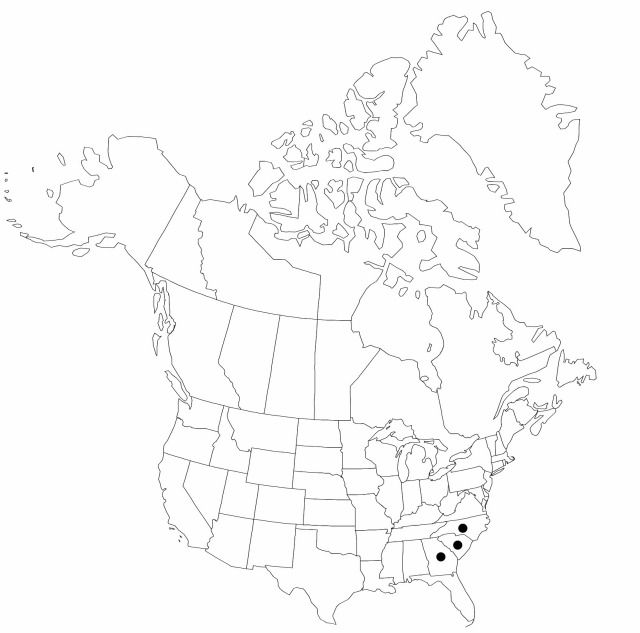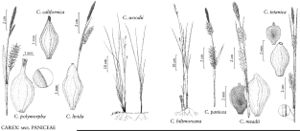Carex biltmoreana
Bull. Torrey Bot. Club 37: 234. 1910.
Plants loosely cespitose, short-rhizomatous, shoots less than 2.5 cm apart. Culms 30–75 cm, smooth to finely scabrous distally. Leaves: proximal sheaths with or without blades, reddish purple-tinged, 3–6.5 mm diam.; ligules 2.5–12 mm, more than 2 times longer than wide; blades of vegetative culms 12–50 cm, evergreen, those of fertile culms green, flat to revolute, 5–20 cm × 3.5–6 mm, herbaceous. Inflorescences 16–32 cm, 1–1.6 times longer than proximal bract; proximal bract 8–19 cm, sheath 1.5–5 cm, blade 7–14 cm; pistillate spikes linear or linearoblong, 1.5–3.5 cm × 3–8 mm; lateral spikes erect or ascending on stiff peduncles. Pistillate scales purple-brown, apex obtuse or short-awned, frequently papillose. Perigynia ascending to spreading, loosely to densely arranged, greenish, 2.5–3.5 × 1.5–2.25 mm, faintly papillose; beak 0–0.7 mm, often bent. Achenes yellowish-brown, 1.8–2.5 × 1.4–1.6 mm.
Phenology: Fruiting early summer.
Habitat: Rocky woods, moist rock faces, granite balds, cliff ledges
Elevation: 850–1600 m
Distribution

Ga., N.C., S.C.
Discussion
Of conservation concern.
Carex biltmoreana is a rare, southern Appalachian Mountain endemic (L. L. Gaddy 1983).
Selected References
None.
Lower Taxa
"shortened" is not a number.
